Results 1 to 10 of 84
Thread: Crocus finish or Satin?
Hybrid View
-
12-31-2015, 05:34 AM #1Senior Member



- Join Date
- Apr 2012
- Location
- Diamond Bar, CA
- Posts
- 6,553
Thanked: 3215
How thick is the leather? Looks thick.
How fast are you planning on running your wheels? Leather wheels I have seen recommend under 800 rpm.
I don’t recall where I read it but that wheels back in the day ran at a very slow speed.
-
01-03-2016, 01:14 PM #2

Concerning the wood wheels encased by leather, there are generally 2 types.

The more easy type is that a leather strap is glued along the circumference of the wood wheel.
The leather should be soft and elastic. Thickness of the leathers straps normally is between 2 and 5 mm, but I have also seen wheels with leather up to 1 cm thickness.

Of course at wheels with a small diameter, such as used for razor polishing, the leather is thinner.
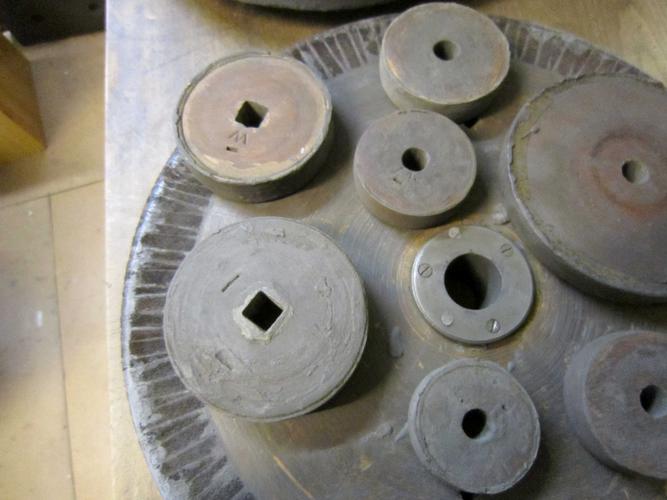
The more complex wheels consist of an inner wood wheel and leather stripes are glued edgewise on the circumference.
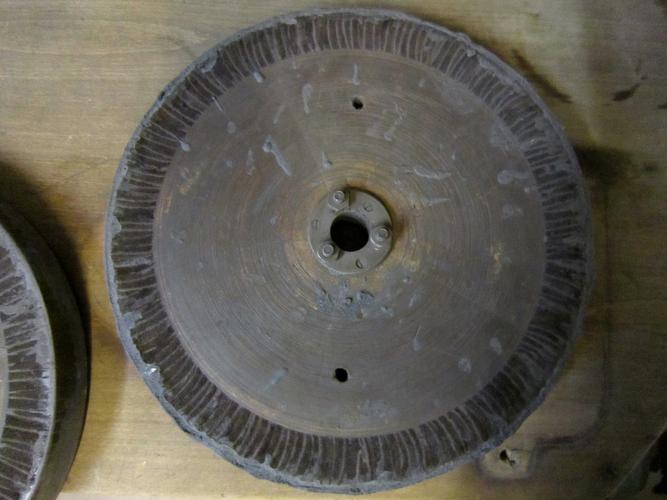
The leather stripes are (partly) wedge-shape to give a better stability.
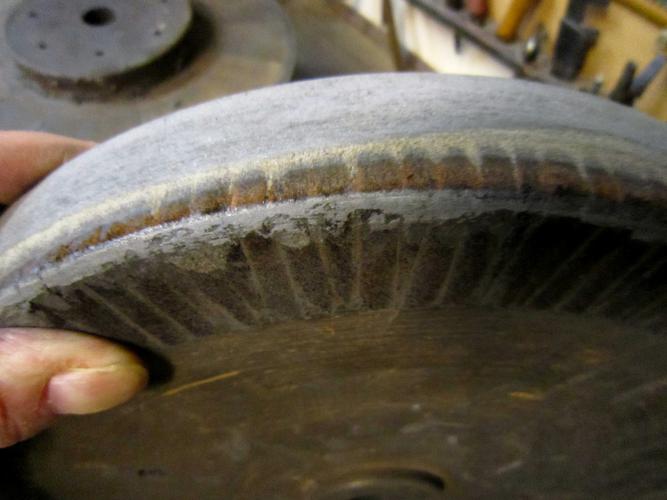
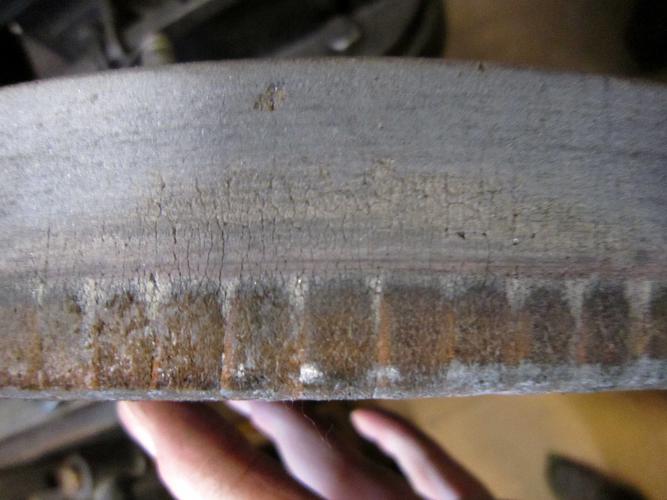
The speed of the polishing wheels depends on the wheel sizes. Generally lower diameter requires higher speed. In old procedure instructions, the recommendations for small wheels under 3’’ diameter is in a range between 3000 and 3500 rpm. For larger wheels of over 10’’ the speed should be below 2000 rpm.
I personally use a bit lower speed values. The motor that drives the transmission has 1425 rpm and considering the different speed regulations from different transmission belt wheels I will end up somehow between 1200 and 2000 rpm most of the time.
-
-
01-04-2016, 09:17 PM #3

I finished making my 'prototype' leather wheel and have tested it out with great results so far! The wheel is designed for a Dremel type of tool... so the 'usual caveats' and cautions apply for those that aren't familiar with using a Dremel tool for razor restoration purposes.
The finished wheel is 1 5/8 inches in diameter or 41.275 mm. Once I got it balanced and 'trued' up it spins evenly with no wobble whatsoever. The leather used was bridal and so far I am really pleased with how it loads up with the polishing medium. I will be trying other leathers and wheel diameters once I give this one a real test.
The way the wheel was made was to make a leather 'circle or loop' where the ID of the circle was slightly less than the diameter of the wooden wheel. Then using a mallet to pound the wheel into the leather circle for a nice snug fit. The inside of the leather was first coated with glue. Worked great!
Once I've tested the different wheels I'll be making for the Dremel I'll be applying what I've learned to making some bigger wheels for the bench buffer. I'll keep everyone posted...
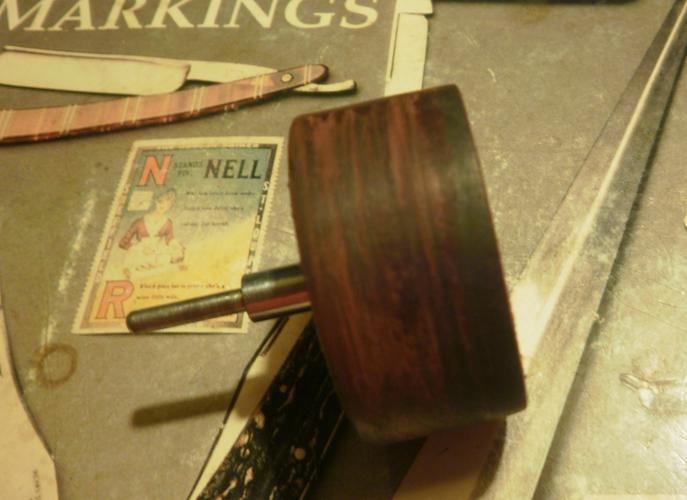
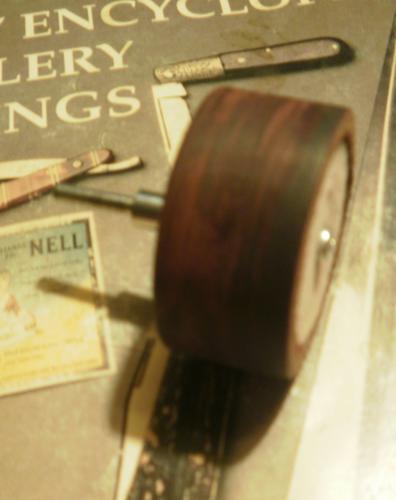 Lupus Cohors - Appellant Mors !
Lupus Cohors - Appellant Mors !
-
-
01-05-2016, 06:52 AM #4Senior Member



- Join Date
- Apr 2012
- Location
- Diamond Bar, CA
- Posts
- 6,553
Thanked: 3215
Ok, thanks for those photos Hatzicho, this is the first close up photo of an actual leather polishing wheel I have seen. Now it all makes sense. I had read that there were guys, that were full time wheel makers, highly skilled, and it took some time to make each wheel, as fast as the polishers would wear them out.
Now, I see why, if each leather piece of Walrus and Seal, had to be cut and tapered to fit, glue on edged and to each other and balance. And here, I was thinking of gluing strips around the circumference and call it done…
They must have used jigs to make wheels of different size, considering that, here in the US in the 1900’s, Genco alone, was advertising making 6,000 razors a week in the early 1900’s.
Don’t know what earlier Sheffield’s and Solingen numbers were, but making quality, balanced wheels must have been a highly skilled, labor intensive and full time job.
I will have to rethink my wheel making idea.
-
01-05-2016, 07:02 AM #5Senior Member




- Join Date
- Feb 2013
- Location
- Haida Gwaii, British Columbia, Canada
- Posts
- 14,454
Thanked: 4830
I thought there was probably more to it than I first imagined, but I had not thought of the piece on edge either. Those wheels will be very complicated to make the first dozen, after that it probably is just down to difficult. I think that the wheels with the leather at 1cm thick, they re likely two or three layers thick. In my mind I had thought a layer of stiff felt and a layer of leather and all was going to be good. I am still going to put a layer of leather on my MDF wheels similar to Wolfpack. My deep thought is more on the machine running the smaller wheels like 2". That does not give a guy much for finger space.
It's not what you know, it's who you take fishing!
-
01-05-2016, 09:22 AM #6

This type of thread is heady stuff for me, someone who has never stood in front of a buffer or belt driven machine of any kind. What I think is happening is that all of this is moving towards reproducing a finish using methods that were perfected in the past and were lost or cast aside for one reason or another. I'm seeing these leather wheels in varying diameters running at varying speeds with different compounds for polishing. I'm seeing the planes and curves of a straight razor being given a designated wheel for that surface resulting in crisp lines and a hypnotically deep and glossy surface. Gone will be the soft restorations!
Please don't correct me if I'm wrong, I'd like to stay in this dream "Call me Ishmael"
"Call me Ishmael"
CUTS LANE WOOL HAIR LIKE A Saus-AGE!
-
01-05-2016, 11:05 AM #7

A very straightforward way to make leather wheels of any diameter or thickness is to cut a series of say 2" diameter circles from a piece of cowhide and glue them together to make your desired thickness. Then you drill though the centre and use a length of threaded bar and a nut and washer on either side of your 'wheel' to make a shaft. You can then mount this in your motor and while it's running use a coarse abrasive paper wrapped around a flat file to dress the wheel and make sure it's running true.
Simple aka Michael Waterhouse
aka Michael Waterhouse


 221Likes
221Likes LinkBack URL
LinkBack URL About LinkBacks
About LinkBacks






 Reply With Quote
Reply With Quote
